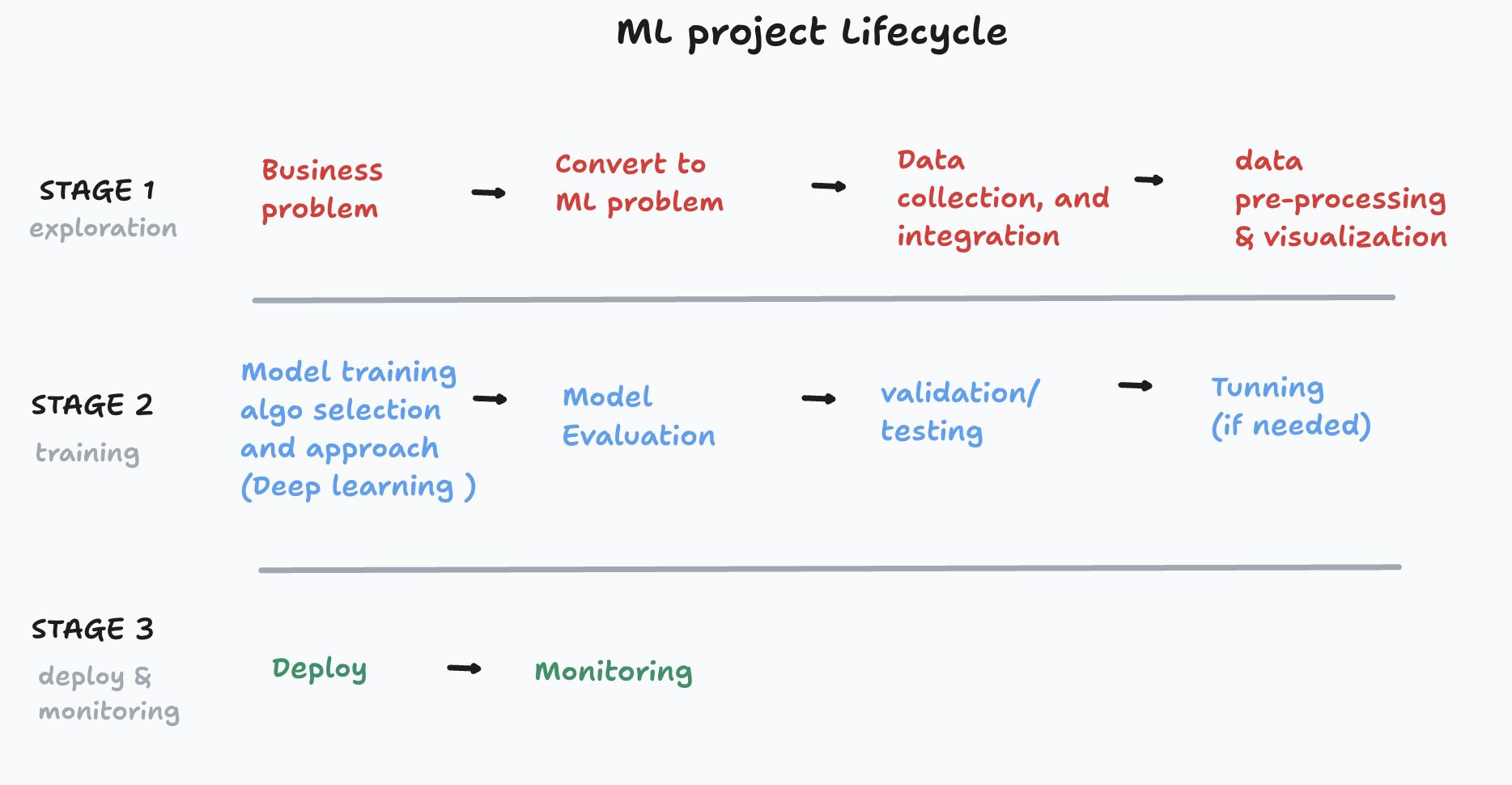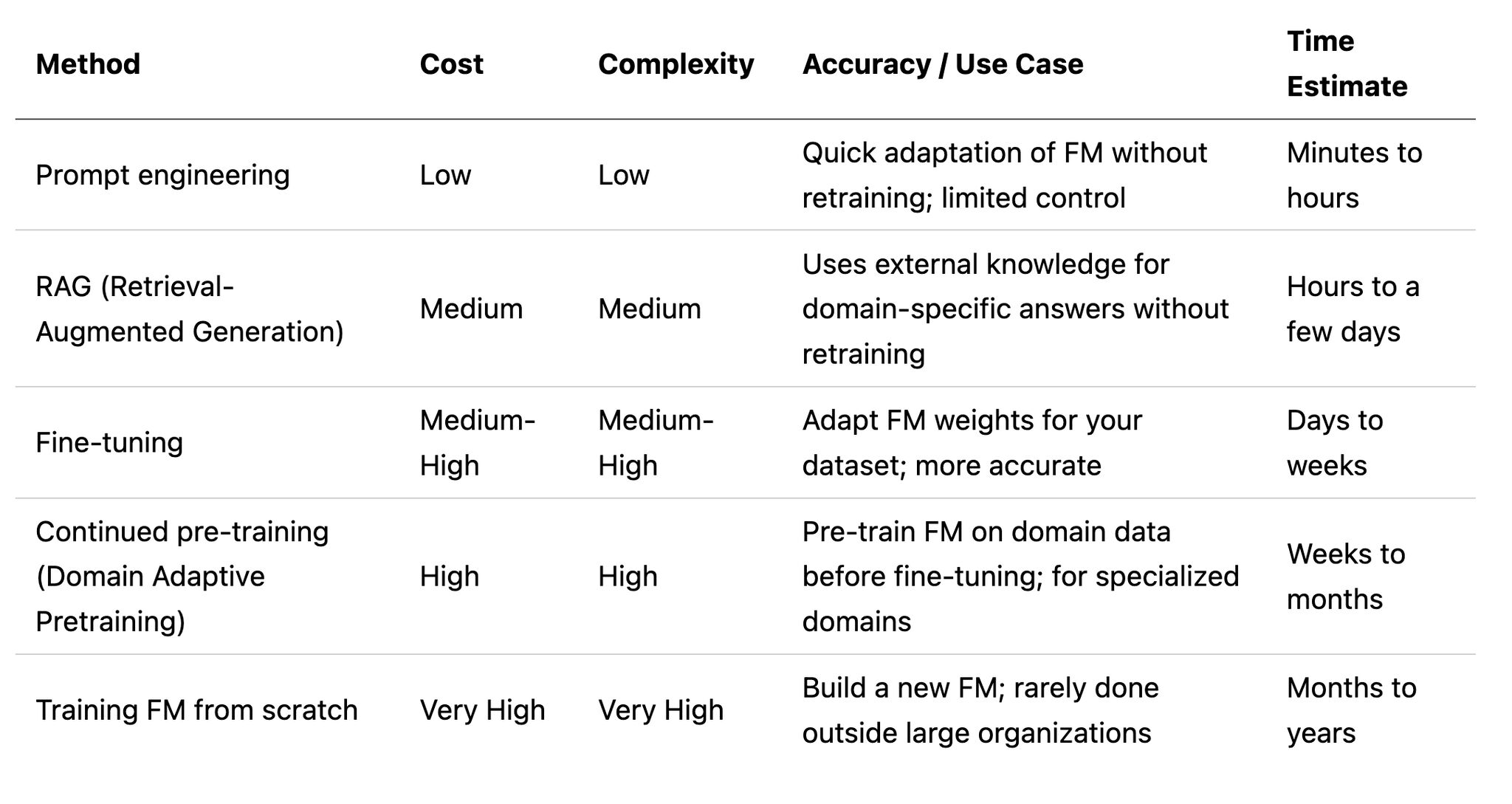Learning AI - 7 days, 7 concepts
3 min readI have started a new 7 days challenge over Linkedln to share AI fundamentals. This is something that will keep me on my toes.
Day 0: ML Project Lifecycle
How an ML Project Lifecycle looks like?
A typical Machine Learning (ML) project goes through three main stages:
Stage 1: Exploration : This is where most of the effort happens. Once the ML problem is defined, engineers collect, integrate, and clean data.
Stage 2: Model Training: With a clean dataset ready engineer will use 80% of the data used for training and validation and rest for testing.
This stage includes algorithm selection, model training, evaluation, and tuning to achieve the best performance.
Stage 3: Deployment & Monitoring: once all is good we deploy and continuous monitor it
and this is where AWS sagemaker comes in the picture. It provides e2e tool (also a no code tool) to take care or support at each stage.

Day 1: "Foundational Models Customisation
What is foundational Models (FM)?
Foundational models are large pre-trained models trained on massive and diverse datasets to perform multiple tasks. Amazon Web Services (AWS) has Bedrock a collection of foundational Models.
Use case of FM?
Business can customize these models to meet business requirements. Eg: A medical company can create a GenAI solution and adpat an FM based on their own company's data. For this they will customization FM models.
there are different techniques of customisation of Foundation models and needs to evaluate by AI engineer based on cost, complexity , and accuracy.
1 . prompt engineering
2 . RAG (retrival augmented generation)
3 . Fine-tuning
4 . continued pre-training
5 . training from scratch
Below is the comparison of these techniques that guide AI engineer to take decision to meet their business requirements.

Day 2: Hyperparameters
What are Hyperparameters?
In Large Language Models (LLMs), hyperparameters are settings that engineers adjust to control how the model generates text. They influence the style, randomness, and creativity of the output.
Does hyperparameters change model?
Hyperparameters do not change or retrain the model itself.
Common LLM hyperparameters include:
1 . Temperature: controls how random or deterministic the output will be. 0 means safe, predictable but 1 means creative.
eg: prompt - "“Write a short sentence about the weather.” ; temperature 0 will return a safe, predictable, factual such as - weather is sunny today
temperature 1 will return an imaginative and creative such as - The weather feels like a glowing blanket dancing across the sky!
2 . Top-p (nucleus sampling) : selects from the smallest group of words whose combined probability = p
eg: prompt: “The cat sat on the…” and top-p=0.1 only very likely words (tiny probability nucleus) eg: "mat ; Top-p = 0.9 will return most common words + some unusual ones. eg: “windowsill / doorstep / roof / mat.”
3 . Top-k: keeps only the top k most likely words when choosing the next token.
eg: prompt: “The cat sat on the…”; Top-k = 1 ; Only the most likely next word is allowed - most common phrase. Output: “mat.”
Top-k = 50; Model can choose from 50 possible words.
On all 3 lower the value means safe and predicable response and higher means creative , or boarder options.
These hyperparameters fine-tune the behavior of the model during text generation, without modifying its weights or training.

